- Luxembourg
- Hans Gál
- Houston Grand Opera
- Swedish
- Barbican Hall
- Salvador Bacarisse Chinoria
- Germanic
- Luigi Pasanari
 DISCUSSION: What is a work? John Dante Prevedini leads a discussion about The performing artist as co-creator, including contributions from Halida Dinova, Yekaterina Lebedeva, Béla Hartmann, David Arditti and Stephen Francis Vasta.
DISCUSSION: What is a work? John Dante Prevedini leads a discussion about The performing artist as co-creator, including contributions from Halida Dinova, Yekaterina Lebedeva, Béla Hartmann, David Arditti and Stephen Francis Vasta.
 WORD SEARCH: Can you solve Allan Rae's classical music word search puzzles? We're currently publishing one per month.
WORD SEARCH: Can you solve Allan Rae's classical music word search puzzles? We're currently publishing one per month.
Elegance and Drama
GIUSEPPE PENNISI is impressed by Roland Petit's two act ballet 'Notre Dame de Paris'
I have been absent involuntarily for a few weeks from live shows (and many other things). On my return from the classical drama performances at the Greek theatre in Syracuse (reported here on 23 August), a banal domestic accident - a fall at home due to a false step in getting up from the sofa in the living room - caused me a fracture in the foot, and, therefore, orthopedic brace, crutches and wheelchair. After three weeks of forced lockdown, I resumed attending live performances on Saturday 18 September 2021, also thanks to the courtesy of Teatro dell'Opera di Roma, who assisted me in every way.
One of the autumn performances was on the billboard: the two act ballet Notre Dame de Paris by Roland Petit (and taken up by Luigi Bonino as Petit died in 2011), based on the novel by Victor Hugo with the same title, with music by Maurice Jarre, sets by René Allo, costumes by Yves Saint Laurent and lighting by Jean-Michel Désiré. There was a full house, within the limits of half the capacity allowed by the anti-COVID protocols now in force. The ballet dates back to 1965, when it debuted at the Opéra de Paris. It had been brought to Rome for a single evening by the Ballet of Marseille in 1985. The current production is by the Opéra de Paris and the Opéra National de Bordeaux. It is as faithful as possible to the original.
It is useful to remember that Hugo's gruesome blood and guts novel was the basis of three successful films - dated, respectively, 1939, 1956 and 1996 - as well as a rock opera that has been traveling the world for about twenty years. The Petit-Jarre ballet distances itself from these transpositions not only for elegance but also for fidelity to the spirit of the novel. Why resume a show from 1965? For the same reason that, as subscribers to an on-demand television platform, we often turn to masterpieces of the past such as Casablanca and Bicycle Thieves instead of often mediocre and disappointing novelties.
Teatro dell'Opera di Roma was right to make Notre Dame de Paris known to those who have not seen it, or have only seen it on television or DVD, because it is a masterpiece of ballet music as well as of music of the second half of the twentieth century.
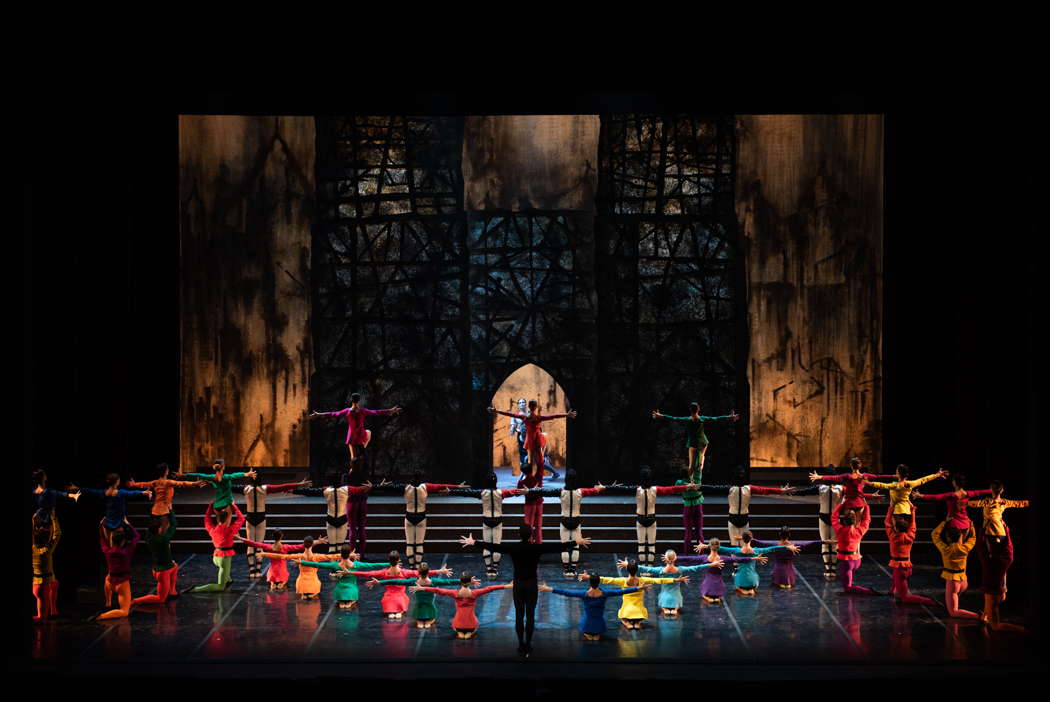
The Corps de Ballet of Teatro dell'Opera di Roma in Notre Dame de Paris. Photo © 2021 Fabrizio Sansoni
Let us start with the music. Maurice Jarre is best known for his soundtracks - Lawrence of Arabia, Doctor Zhivago and Passage to India - which have brought him three Oscars and numerous other awards. Unlike his son Jean-Michel (who made a name for himself by merging electronic music and jazz), Maurice Jarre follows the traditional, diatonic and neo-romantic canons, which fit perfectly with the dark hues, with romantic moments, of Hugo's truculent novel. The score is performed with precision by the orchestra and chorus (for some interventions) of the Teatro dell'Opera di Roma conducted by Kevin Rhodes.
The sets by René Allo for the thirteen rapid scenes are mainly curtains on canvas full of suggestion and rapid use. Yves Saint Laurent's flamboyant costumes which reproduce the elegant splendor of the stained glass windows of a medieval Cathedral are very beautiful.
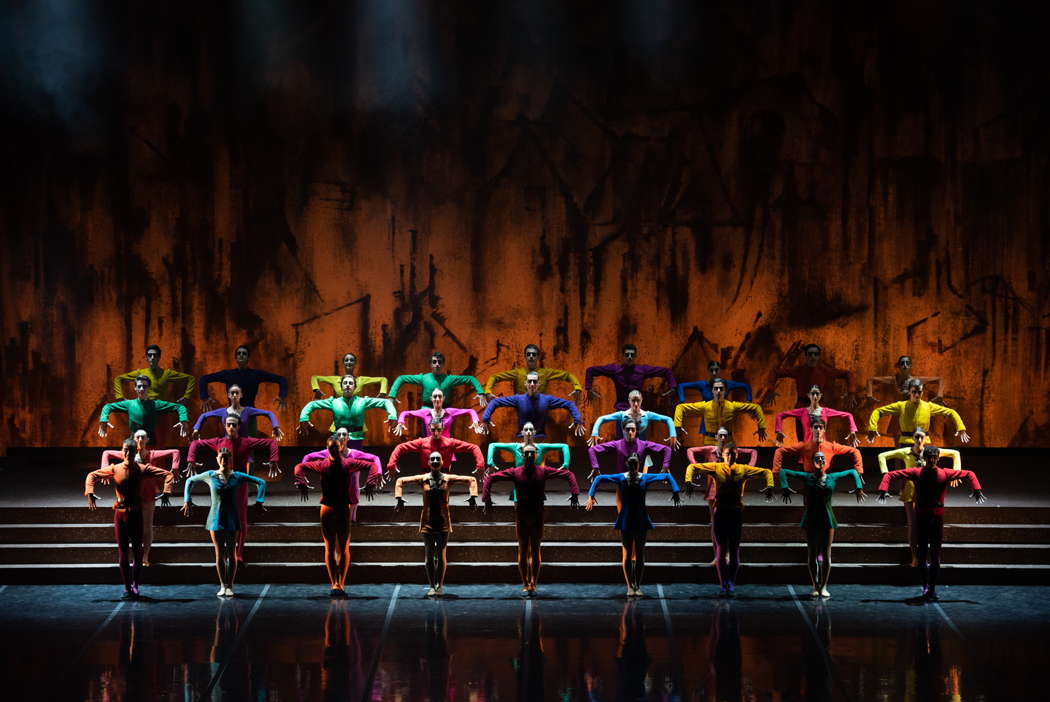
The Corps de Ballet of Teatro dell'Opera di Roma in Notre Dame de Paris. Photo © 2021 Fabrizio Sansoni
The plot of the complex novel is obviously simplified. There are four protagonists.
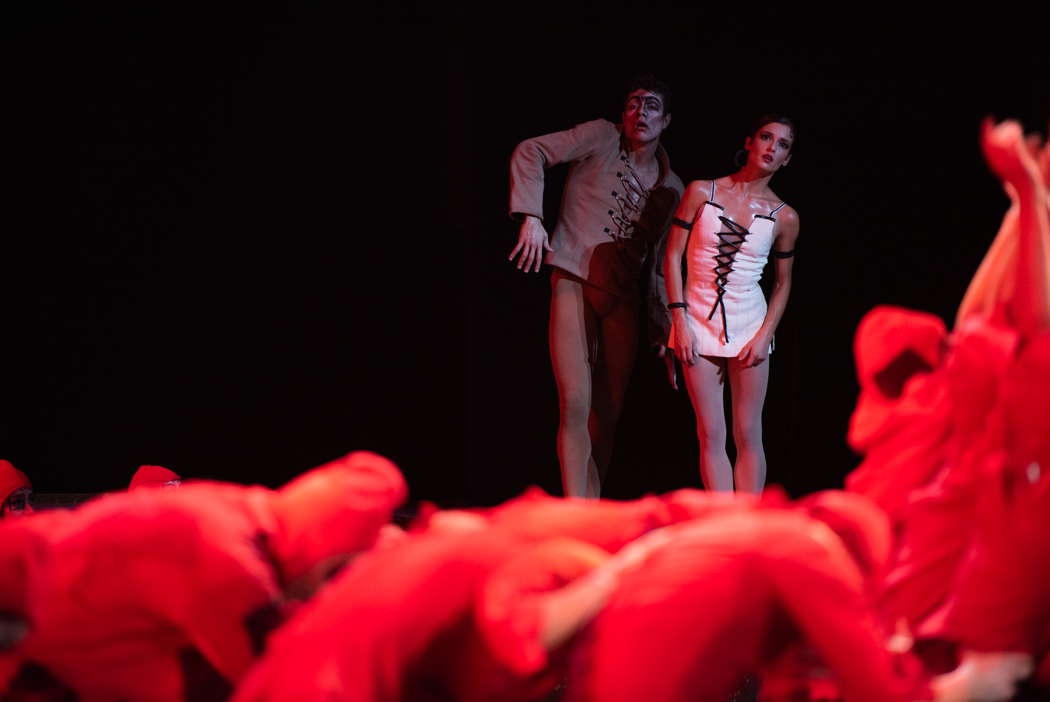
Susanna Salvi as Esmeralda and Michele Satriano as Quasimodo in Notre Dame de Paris. Photo © 2021 Fabrizio Sansoni
The night I attended the show, these were Susanna Salvi as Esmeralda, Michele Satriano as Quasimodo, Giacomo Castellana as Phoebus and Alessio Rezza as Frollo.
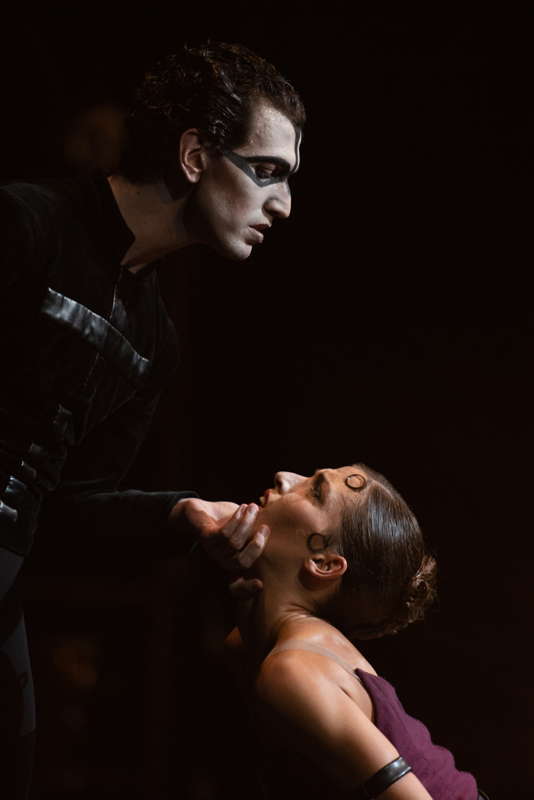
Alessio Rezza as Frollo and Susanna Salvi as Esmeralda in Notre Dame de Paris. Photo © 2021 Fabrizio Sansoni
The whole corps de ballet is engaged in numerous mass scenes: the party in the square; prayer in the Church; the churchyard of Notre Dame; pursuit; the pillory; the march of the soldiers; the tavern; the process; the assault on the Cathedral; and so on.
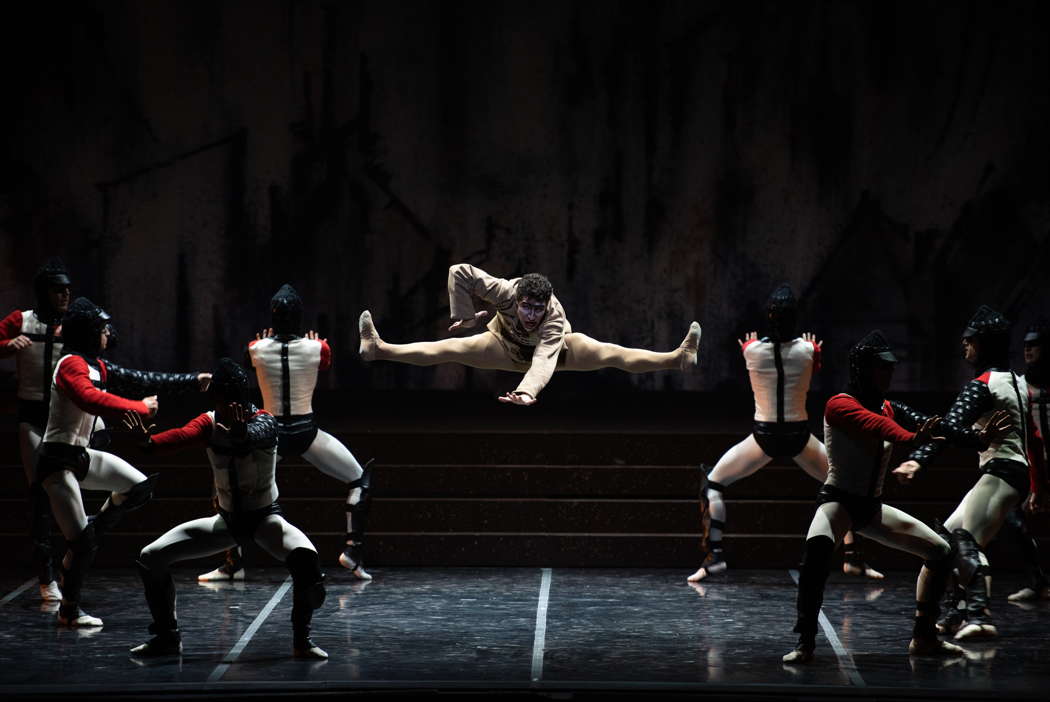
Michele Satriano as Quasimodo and members of the Corps de Ballet of Teatro dell'Opera di Roma in Notre Dame de Paris. Photo © 2021 Fabrizio Sansoni
Scenes and music with a strong rhythmic impulse alternate with sensual moments - the Act I pas-de-deux Esmeralda-Phoebus that becomes pas à trois with the arrival of the lascivious Frollo - or sentimental - the pas-de-deux Esmeralda-Quasimodo in Act II Scene 2. An intelligent scheme that reflects Hugo's novel in which bloody moments alternate with sentimental moments.
There was open stage applause at the start of each scene, and there were ovations as the curtain fell.
Copyright © 20 September 2021
Giuseppe Pennisi,
Rome, Italy



